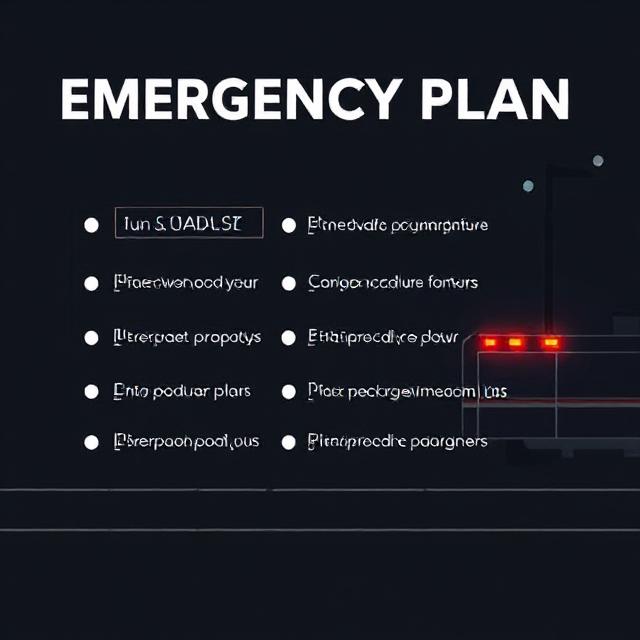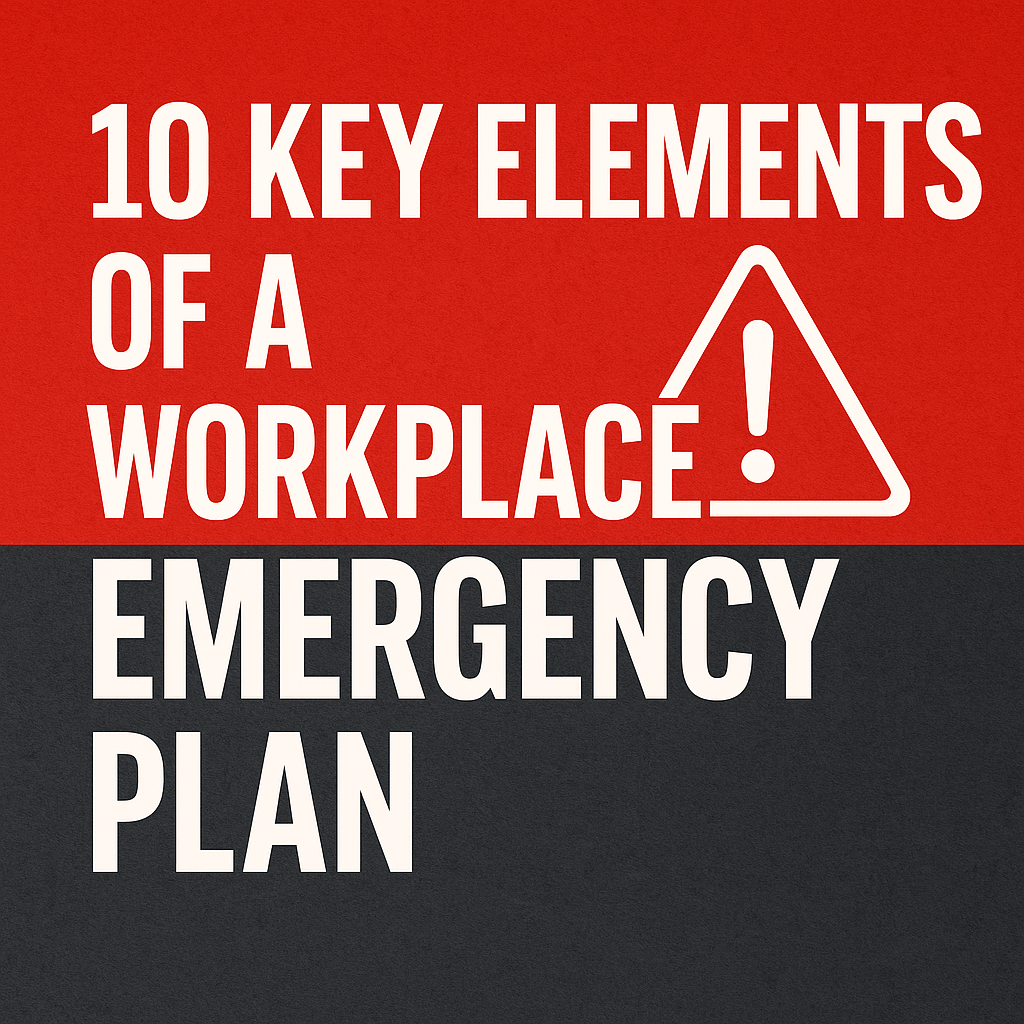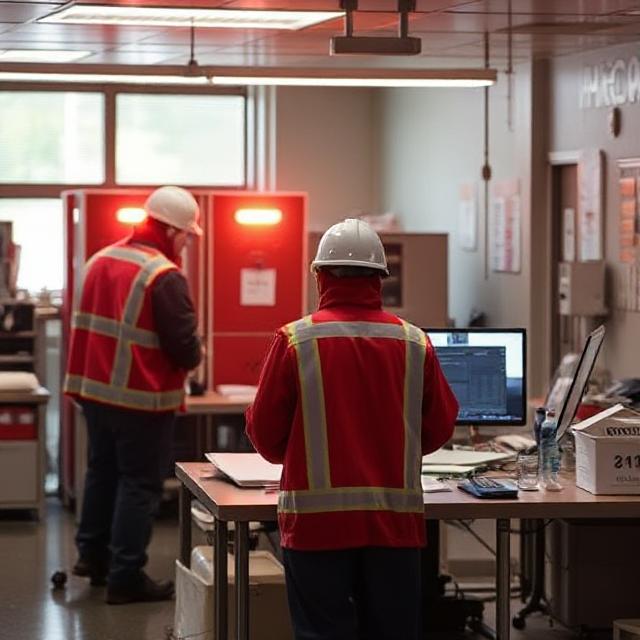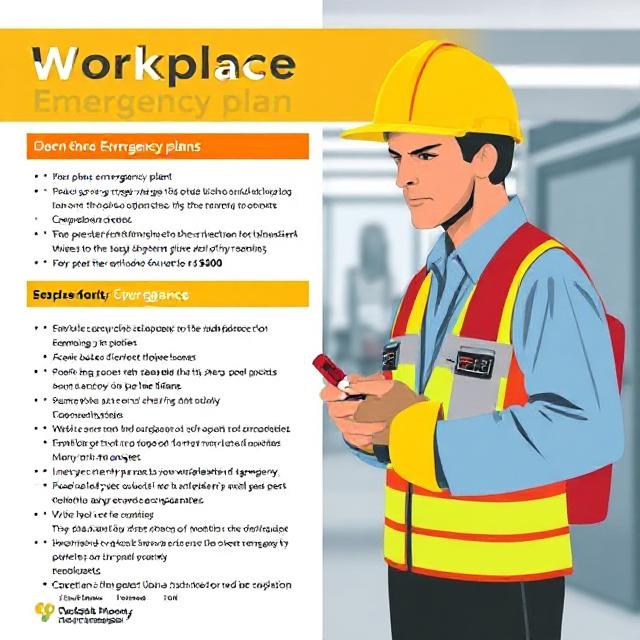A workplace emergency plan isn’t just a legal requirement — it’s a lifesaving blueprint. Emergencies can happen at any time, whether it’s a fire, chemical spill, severe weather, or a workplace violence incident.
The difference between chaos and control often comes down to having a well-designed emergency plan.

In this article, we’ll walk you through the 10 key elements of a workplace emergency plan so you can protect your employees, your assets, and your reputation while meeting OHSE compliance standards.
- 1. Risk Assessment
- 2. Clear Roles and Responsibilities
- 3. Communication Protocols
- 4. Evacuation Procedures
- 5. Shelter-in-Place Instructions
- 6. First Aid and Medical Response
- 7. Coordination with External Agencies
- 8. Special Provisions for Vulnerable Workers
- 9. Training and Drills
- 10. Continuous Review and Improvement
- Why a Strong Workplace Emergency Plan Matters
- Final Thoughts
1. Risk Assessment
The foundation of any emergency plan is understanding what could go wrong. A thorough risk assessment identifies potential hazards specific to your industry and location — from electrical faults to hazardous chemical storage.
Action Tip: Use tools from the Canadian Centre for Occupational Health and Safety (CCOHS) to perform regular risk evaluations.
2. Clear Roles and Responsibilities
During an emergency, confusion can waste precious seconds. Assign roles in advance: fire wardens, first aid responders, evacuation leaders, and communication coordinators.
Action Tip: Display a visible chart with assigned names and contact details in common areas.
3. Communication Protocols
Fast, accurate communication is critical. Your plan should detail how to alert employees, emergency services, and stakeholders. This includes alarms, public address systems, text alerts, and two-way radios.
Action Tip: Test communication channels quarterly to ensure reliability.

4. Evacuation Procedures
A strong plan includes clearly marked escape routes, accessible exits, and assembly points. Maps should be posted in multiple areas, and drills should be held regularly.
Action Tip: Ensure routes are wheelchair-accessible and free from obstructions at all times.
5. Shelter-in-Place Instructions
Some emergencies, like chemical spills or severe weather, require people to stay indoors. Your plan should explain how to secure doors, seal windows, and maintain ventilation safety.
Action Tip: Store necessary supplies such as water, first aid kits, and battery-powered communication devices in shelter areas.
6. First Aid and Medical Response
Immediate medical attention can save lives. Include the location of first aid kits, AEDs (Automated External Defibrillators), and trained first aid responders.
Action Tip: Offer annual first aid and CPR training to employees.
7. Coordination with External Agencies
Your plan should outline how and when to contact local emergency services, utility providers, and environmental agencies. Building strong relationships with these partners improves response time.
Action Tip: Keep an up-to-date list of agency contacts in both digital and printed formats.

8. Special Provisions for Vulnerable Workers
Consider employees with disabilities, medical conditions, or language barriers. Your plan should detail support systems for these workers during emergencies.
Action Tip: Conduct one-on-one planning with individuals who may need extra assistance.
9. Training and Drills
A plan is useless if no one knows how to use it. Conduct regular training sessions and emergency drills to ensure everyone understands their role and can respond calmly.

Action Tip: Rotate scenarios — practice fire drills, spill containment, and active threat responses.
10. Continuous Review and Improvement
Workplace hazards evolve. Review and update your emergency plan at least annually or after any major incident. Gather feedback from employees and make improvements.
Action Tip: Use post-drill evaluations to identify gaps and take corrective action immediately.
Why a Strong Workplace Emergency Plan Matters
- Compliance: Avoid fines and legal penalties.
- Preparedness: Minimize injury, loss, and downtime.
- Confidence: Workers feel safer knowing there’s a plan in place.
- Reputation: Shows commitment to health, safety, and OHSE best practices.
Final Thoughts
These 10 key elements of a workplace emergency plan form the backbone of effective safety management. A plan that’s well-documented, practiced, and regularly updated not only meets OHSE compliance but also saves lives.

Remember: Safety isn’t just about having a plan — it’s about making sure everyone can put that plan into action when it matters most.

No comments yet